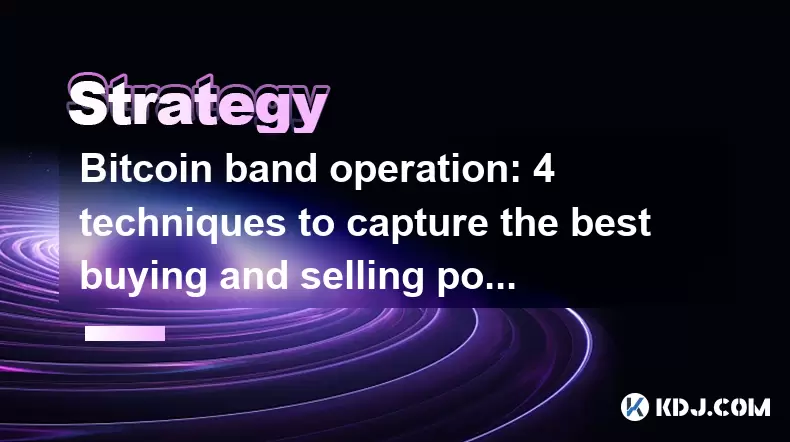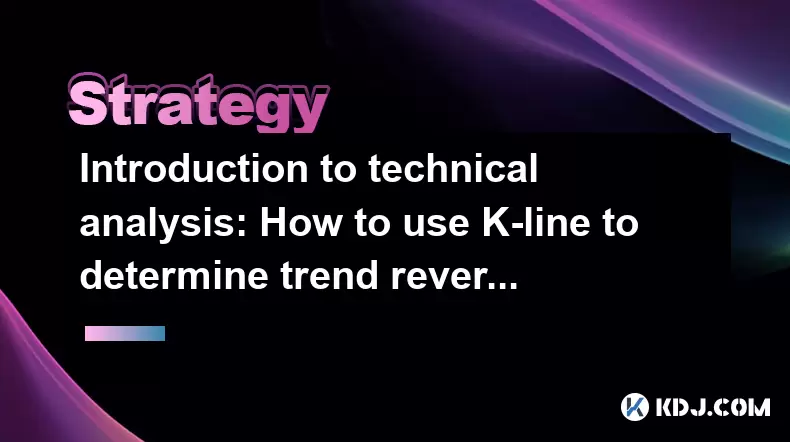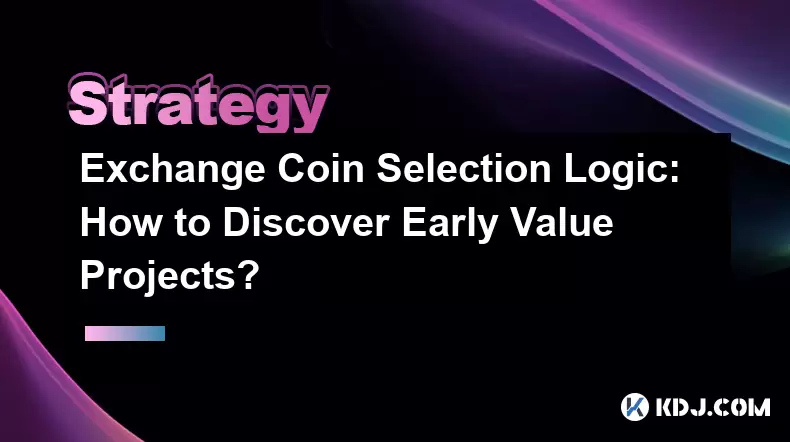-
 Bitcoin
Bitcoin $107,535.3915
-1.00% -
 Ethereum
Ethereum $2,513.2907
-1.34% -
 Tether USDt
Tether USDt $1.0002
-0.01% -
 XRP
XRP $2.3040
-1.92% -
 BNB
BNB $667.0450
-0.74% -
 Solana
Solana $172.1304
-1.92% -
 USDC
USDC $0.9999
0.01% -
 Dogecoin
Dogecoin $0.2202
-3.11% -
 Cardano
Cardano $0.7508
-0.78% -
 TRON
TRON $0.2729
0.45% -
 Hyperliquid
Hyperliquid $37.9716
11.25% -
 Sui
Sui $3.5160
-3.42% -
 Chainlink
Chainlink $15.2541
-2.43% -
 Avalanche
Avalanche $22.4608
-2.48% -
 Stellar
Stellar $0.2829
-1.81% -
 Shiba Inu
Shiba Inu $0.0...01431
-0.39% -
 Bitcoin Cash
Bitcoin Cash $414.6973
-2.97% -
 UNUS SED LEO
UNUS SED LEO $8.9026
1.06% -
 Hedera
Hedera $0.1844
-2.82% -
 Monero
Monero $407.2378
2.73% -
 Toncoin
Toncoin $2.9828
-0.49% -
 Litecoin
Litecoin $94.8931
-1.74% -
 Polkadot
Polkadot $4.4718
-2.07% -
 Bitget Token
Bitget Token $5.3951
-3.60% -
 Pi
Pi $0.7731
1.27% -
 Pepe
Pepe $0.0...01311
-4.99% -
 Dai
Dai $0.9999
-0.01% -
 Ethena USDe
Ethena USDe $1.0004
-0.02% -
 Aave
Aave $264.5219
-0.15% -
 Uniswap
Uniswap $6.0680
-1.63%
Bitcoin band operation: 4 techniques to capture the best buying and selling points
Bitcoin band operations use Bollinger Bands, Keltner Channels, Donchian Channels, and Moving Average Envelopes to identify optimal buying and selling points in the crypto market.
May 25, 2025 at 10:49 am

Bitcoin band operation is a popular trading strategy used by many in the cryptocurrency market to identify optimal buying and selling points. This strategy involves using different technical indicators to create bands or channels around the price action of Bitcoin. These bands help traders determine when to enter or exit the market based on the price's position relative to the bands. In this article, we will explore four key techniques that traders can use to capture the best buying and selling points using Bitcoin band operations.
Bollinger Bands
Bollinger Bands are one of the most widely used tools in technical analysis for Bitcoin trading. These bands consist of a middle band, typically a simple moving average (SMA), and two outer bands that are standard deviations away from the middle band. The key to using Bollinger Bands effectively is to understand how the price interacts with these bands.
- Identify the Bands: Start by plotting the Bollinger Bands on your Bitcoin chart. The default settings are usually a 20-day SMA for the middle band and two standard deviations for the upper and lower bands.
- Watch for Price Touches: When the price of Bitcoin touches or crosses the upper band, it might be overbought, suggesting a potential selling point. Conversely, if the price touches or crosses the lower band, it might be oversold, indicating a potential buying opportunity.
- Look for Band Squeezes: A band squeeze occurs when the bands come closer together, indicating low volatility. A subsequent expansion of the bands can signal the start of a new trend, providing a potential entry point.
Keltner Channels
Keltner Channels are another effective tool for Bitcoin band operations. Similar to Bollinger Bands, Keltner Channels consist of a middle line and two outer bands. However, the middle line is typically an exponential moving average (EMA), and the outer bands are based on the average true range (ATR).
- Set Up the Channels: Plot the Keltner Channels on your Bitcoin chart. The default settings are often a 20-day EMA for the middle line and the ATR multiplied by a factor (usually 2) for the outer bands.
- Monitor Price Action: When the price of Bitcoin moves above the upper channel, it may be overbought, indicating a potential sell signal. If the price falls below the lower channel, it might be oversold, suggesting a potential buy signal.
- Watch for Breakouts: A breakout from the upper or lower channel can signal the start of a new trend. Traders can use these breakouts to enter trades in the direction of the breakout.
Donchian Channels
Donchian Channels are a simple yet powerful tool for identifying potential trading opportunities in Bitcoin. These channels are formed by plotting the highest high and the lowest low over a specified period.
- Plot the Channels: Set up the Donchian Channels on your Bitcoin chart. The default period is often 20 days, but this can be adjusted based on your trading strategy.
- Identify Breakouts: When the price of Bitcoin breaks above the upper channel, it signals a potential buying opportunity. Conversely, a break below the lower channel indicates a potential selling point.
- Use as Support and Resistance: The upper and lower channels can also serve as dynamic levels of support and resistance. Traders can use these levels to gauge potential reversal points.
Moving Average Envelopes
Moving Average Envelopes are another technique for Bitcoin band operations that involve plotting bands around a moving average. These bands are typically set at a fixed percentage above and below the moving average.
- Set Up the Envelopes: Plot the Moving Average Envelopes on your Bitcoin chart. The default settings are often a 20-day SMA with bands set at 5% above and below the SMA.
- Identify Overbought and Oversold Levels: When the price of Bitcoin moves above the upper envelope, it may be overbought, suggesting a potential selling point. If the price falls below the lower envelope, it might be oversold, indicating a potential buying opportunity.
- Watch for Price Reversals: Traders can use the envelopes to identify potential reversal points. When the price approaches the upper or lower envelope, it may signal an impending reversal.
Combining Techniques
While each of these techniques can be effective on its own, combining them can provide a more robust trading strategy. For example, traders can use Bollinger Bands to identify overbought and oversold levels and Keltner Channels to confirm potential breakouts. Similarly, Donchian Channels can be used to identify breakouts, while Moving Average Envelopes can help confirm potential reversal points.
- Use Multiple Indicators: Plot multiple indicators on your Bitcoin chart to gain a comprehensive view of the market.
- Confirm Signals: Look for confluence between different indicators to increase the reliability of your trading signals.
- Adjust Settings: Experiment with different settings for each indicator to find the combination that works best for your trading style.
Practical Application
To apply these techniques effectively, traders need to practice and refine their strategies. Here’s a step-by-step guide on how to implement these techniques in a real trading scenario:
- Choose Your Platform: Select a reliable trading platform that supports the plotting of technical indicators such as Bollinger Bands, Keltner Channels, Donchian Channels, and Moving Average Envelopes.
- Set Up Indicators: Plot the desired indicators on your Bitcoin chart using the settings mentioned above.
- Monitor the Market: Keep an eye on the price action and how it interacts with the bands and channels.
- Identify Opportunities: Look for potential buying and selling opportunities based on the signals provided by the indicators.
- Execute Trades: Enter or exit trades based on the signals, ensuring to use proper risk management techniques such as stop-loss orders.
Frequently Asked Questions
Q1: Can these techniques be used for other cryptocurrencies besides Bitcoin?
Yes, these techniques can be applied to other cryptocurrencies. The principles of technical analysis remain the same, although the volatility and market dynamics may differ.
Q2: How often should I adjust the settings of these indicators?
The frequency of adjusting the settings depends on your trading style and the market conditions. Some traders may find it beneficial to adjust settings periodically, while others may prefer to stick with a consistent setup.
Q3: Are these techniques suitable for beginners?
While these techniques can be used by beginners, it is important for new traders to thoroughly understand each indicator and practice in a demo account before using them in live trading.
Q4: Can these techniques be automated?
Yes, these techniques can be automated using trading algorithms and bots. However, it is crucial to backtest and monitor the performance of any automated system to ensure its effectiveness.
Disclaimer:info@kdj.com
The information provided is not trading advice. kdj.com does not assume any responsibility for any investments made based on the information provided in this article. Cryptocurrencies are highly volatile and it is highly recommended that you invest with caution after thorough research!
If you believe that the content used on this website infringes your copyright, please contact us immediately (info@kdj.com) and we will delete it promptly.
- Dogecoin (DOGE) is heating up again. Right now, it's pushing to break past the $0.22 safe zone and make a run at the $0.30 resistance level.
- 2025-05-25 22:05:13
- Bitcoin [BTC] Is Still Flexing Serious Muscle Despite All the Volatility. By: Smith. Updated: May 27, 2021.
- 2025-05-25 22:05:13
- Coinbase-backed Base, an Ethereum Layer 2 network, is set to undergo significant upgrades to make it faster, cheaper, and more decentralized.
- 2025-05-25 22:00:26
- Layer 2 Network Base Prepares for Overhaul That Could Challenge Solana and Sui
- 2025-05-25 22:00:26
- 3 Altcoins Poised to Explode in the Next Bull Run: Qubetics (TICS), Hedera (HBAR), Cardano (ADA)
- 2025-05-25 21:55:15
- Ripple CEO Brad Garlinghouse Is Rallying Institutional Crypto Adoption as XRP and RLUSD Gain Traction
- 2025-05-25 21:55:15
Related knowledge

Introduction to technical analysis: How to use K-line to determine trend reversal?
May 23,2025 at 11:21pm
Technical analysis is a critical tool for traders in the cryptocurrency market, offering insights into potential price movements based on historical data. One of the most widely used tools in technical analysis is the K-line, also known as candlestick charts. These charts provide a visual representation of price movements within a specific time frame, a...

Grid Trading Practice: How to Make Stable Profits in a Fluctuating Market?
May 23,2025 at 07:00pm
Grid trading is a popular strategy among cryptocurrency traders aiming to capitalize on market volatility. This method involves setting up a series of buy and sell orders at predetermined price levels, creating a grid of trades that can help traders profit from small price movements in both upward and downward trends. In this article, we will explore ho...

Staking Interest-earning Guide: How to Choose High-Return and Low-Risk Nodes?
May 24,2025 at 11:07am
Staking has become a popular way for cryptocurrency holders to earn passive income. By participating in staking, users can help secure the network while earning rewards. However, choosing the right nodes for staking can be challenging, especially when aiming for high returns with low risk. This guide will walk you through the key factors to consider whe...

Stablecoin Arbitrage Method: How to Lock in Profits in Fluctuations?
May 24,2025 at 07:01pm
Stablecoin arbitrage is a strategy that traders use to profit from price discrepancies between different stablecoins. Given that stablecoins are designed to maintain a steady value, usually pegged to a fiat currency like the US dollar, any deviations from their peg can present arbitrage opportunities. This article delves into the stablecoin arbitrage me...

Exchange Coin Selection Logic: How to Discover Early Value Projects?
May 23,2025 at 07:50pm
Exchange Coin Selection Logic: How to Discover Early Value Projects? Selecting the right cryptocurrencies to invest in can be a daunting task, especially when trying to discover early value projects that have the potential for significant growth. Understanding the logic behind exchange coin selection and the criteria for identifying promising projects i...

Blockchain Investment Introduction: How to Diversify Assets?
May 23,2025 at 10:21pm
Investing in blockchain technology and cryptocurrencies has become an increasingly popular way to diversify one's investment portfolio. Diversification in this context refers to spreading investments across various assets within the blockchain and cryptocurrency ecosystem to reduce risk and potentially increase returns. This article will guide you throu...

Introduction to technical analysis: How to use K-line to determine trend reversal?
May 23,2025 at 11:21pm
Technical analysis is a critical tool for traders in the cryptocurrency market, offering insights into potential price movements based on historical data. One of the most widely used tools in technical analysis is the K-line, also known as candlestick charts. These charts provide a visual representation of price movements within a specific time frame, a...

Grid Trading Practice: How to Make Stable Profits in a Fluctuating Market?
May 23,2025 at 07:00pm
Grid trading is a popular strategy among cryptocurrency traders aiming to capitalize on market volatility. This method involves setting up a series of buy and sell orders at predetermined price levels, creating a grid of trades that can help traders profit from small price movements in both upward and downward trends. In this article, we will explore ho...

Staking Interest-earning Guide: How to Choose High-Return and Low-Risk Nodes?
May 24,2025 at 11:07am
Staking has become a popular way for cryptocurrency holders to earn passive income. By participating in staking, users can help secure the network while earning rewards. However, choosing the right nodes for staking can be challenging, especially when aiming for high returns with low risk. This guide will walk you through the key factors to consider whe...

Stablecoin Arbitrage Method: How to Lock in Profits in Fluctuations?
May 24,2025 at 07:01pm
Stablecoin arbitrage is a strategy that traders use to profit from price discrepancies between different stablecoins. Given that stablecoins are designed to maintain a steady value, usually pegged to a fiat currency like the US dollar, any deviations from their peg can present arbitrage opportunities. This article delves into the stablecoin arbitrage me...

Exchange Coin Selection Logic: How to Discover Early Value Projects?
May 23,2025 at 07:50pm
Exchange Coin Selection Logic: How to Discover Early Value Projects? Selecting the right cryptocurrencies to invest in can be a daunting task, especially when trying to discover early value projects that have the potential for significant growth. Understanding the logic behind exchange coin selection and the criteria for identifying promising projects i...

Blockchain Investment Introduction: How to Diversify Assets?
May 23,2025 at 10:21pm
Investing in blockchain technology and cryptocurrencies has become an increasingly popular way to diversify one's investment portfolio. Diversification in this context refers to spreading investments across various assets within the blockchain and cryptocurrency ecosystem to reduce risk and potentially increase returns. This article will guide you throu...
See all articles
























































































